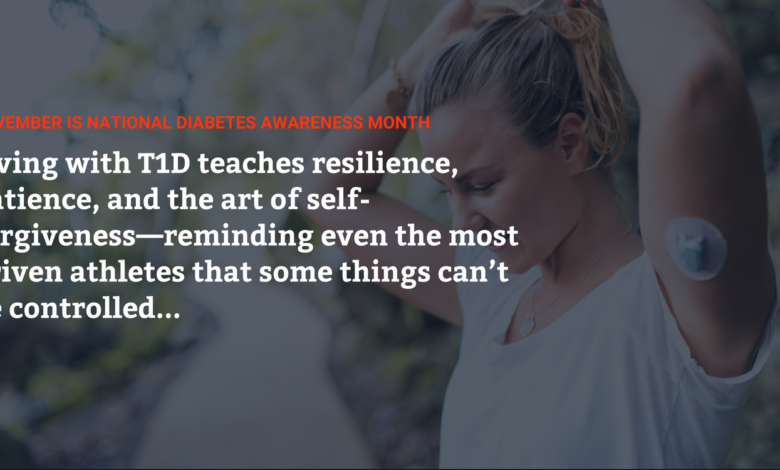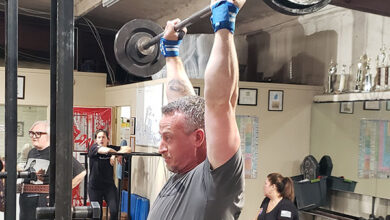Insights, Education, and Empathy — Volt Performance Blog


Supporting and understanding individuals with T1D requires both practical knowledge and emotional sensitivity. Below is some essential information and guidance on how to offer support in various situations. Use this list as a starting point and engage in conversations with the T1Ds in your community to learn how you can best support them and their unique needs proactively.
Low Blood Sugars (Hypoglycemia): What they are and how you can support
What it is: Blood sugars below 70 mg/dL are considered low for Type 1 Diabetics and will often trigger an alarm on their Continuous Glucose Monitor. Unlike others, Type 1 Diabetics don’t just lack the ability to produce insulin but also the hormone that stops glucose levels from dropping too far. That is why it is important to intervene when levels begin to drop below 70. Low glucose levels can be dangerous, leading to confusion, seizures, or even unconsciousness if untreated. Immediate action is often necessary.
What it may feel like: Disorientation, dizziness, shakiness, sweating, confusion, and an alarming sense of loss of control.
How you can help:
-
Keep fast-acting carbohydrates (candy, fruit bars, juice) available in your gym, on the field, or during training.
-
Stay calm and offer help. The person likely knows what they need but may struggle to articulate it in the moment.
High Blood Sugars (Hyperglycemia): What they are and how you can support
What it is: Blood sugars above 180 mg/dL are often considered high for Type 1 Diabetics and may trigger alarms on their Continuous Glucose Monitor. High blood sugars can have serious long-term effects and dangerously high levels can lead to diabetic ketoacidosis (DKA).
What it may feel like: Sluggishness, irritability, brain fog, and extreme thirst. Severe levels may cause nausea, fruity-smelling breath, or abdominal pain.
How you can help:
-
Always have plenty of water on the field or in the gym.
-
Gentle movement and the moving of muscles can help lower blood sugars although exercise is often suggested to be avoided if levels are over 250 mg/dL when ketones may be present.
Monitoring and Devices: Giving grace
Recognize that when someone with T1D checks their device—whether a phone or smartwatch—it’s not a distraction but a critical part of their diabetes management. Glucose monitors and insulin pumps are essential lifelines. Extend understanding and patience when they monitor their levels, as this reflects their commitment to being proactive and responsible in managing their condition.
Fun Facts about T1D and Exercise:
-
Strength training can raise blood sugar temporarily but improves insulin sensitivity long-term.
-
Cardio generally lowers blood sugar.
-
Heat often increases blood sugar, which makes hot yoga or outdoor workouts in the summer challenging for some.
While the physical challenges of T1D are significant, the emotional and mental impacts are just as profound. Managing T1D requires constant vigilance—decisions made throughout the day aren’t just routine but potentially life-altering (and always exhausting).
A Day in the Life: Extra Decisions and the Mental Load
-
Every meal requires meticulous calculations and constant awareness for insulin dosing. T1Ds mentally sift through various factors, including the carbohydrate content of their meal, the glycemic index of those carbs, recent workouts, upcoming exercise plans, sleep quality from the previous night, and for women, their current phase in the menstrual cycle—among countless other considerations—all just to decide how to manage a single meal.
-
Staying in range while exercising requires the same amount of consideration, planning, and monitoring.
-
Managing unexpected drops or spikes in blood sugar can be stressful and sometimes frightening.
-
Continuous alarms from glucose monitors when levels go out of range are persistent reminders of imperfection, leading to frustration and anxiety.
This relentless stream of decisions creates an exhaustion that goes beyond physical fatigue. It’s the mental strain of balancing countless variables, knowing that, despite best efforts, outcomes can still be unpredictable and perfection is out of reach. For many, this is difficult to accept—especially for those who are competitive by nature and driven to excel, like athletes and fitness lovers. Yet, living with T1D teaches resilience, patience, and the art of self-forgiveness, reminding even the most dedicated athletes and weekend warriors that some things simply can’t be controlled.
Support through Empathy
When supporting someone with T1D, remember that they’re managing not just the visible physical aspects but also the invisible emotional weight. Your understanding, patience, and awareness of their experience can make an immense difference.
While we call extra attention and awareness to Diabetes in November, it’s a good reminder for us all of the understanding and empathy that all invisible conditions deserve—whether they’re chronic illnesses, mental health struggles, or unseen physical injuries. These conditions often require their own set of extra decisions, adjustments, and personal challenges. Those who live with them might seem fine on the surface, but they carry an ongoing mental and emotional load that can be overwhelming.
Your empathy, patience, and support can be a powerful reminder to those managing invisible conditions that they are seen, understood, and valued. Whether someone is managing the fluctuating demands of diabetes, coping with chronic pain, or navigating mental health challenges, the gift of grace and kindness goes a long way in lightening their load!



